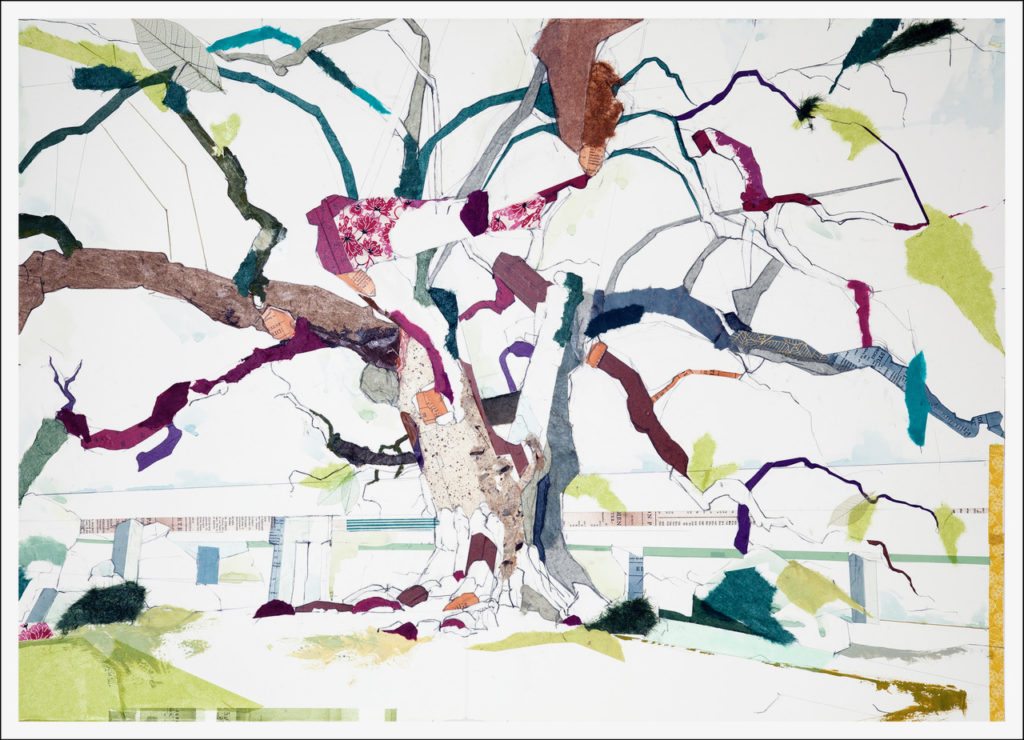
Ever since Idaho-based artist Jill Lear began painting trees, she has made it her mission to go directly to the source. Having visited and been inspired by historic trees across the United States, she hopes to eventually broaden her search overseas. Here, she discusses why she chose trees to represent specific places and how certain states protect their trees better than others.
“Trees are perfect puzzles of proportions. They fulfill every one of my obsessions: exactitude, increments, and spaces between things—the intellectual and technical aspects of portraying a subject. And I found that the more time I spent in front of trees, the more I realized how important the sense of place was, of standing in front of that tree and trying to express what it felt like to be there. That’s when I started titling my pieces with the latitude and longitude coordinates—I wanted to convey that particular tree in that particular place. When I say that I want to express the experience of standing in front of the tree, I mean it literally. Not visually, not as an icon. What does it feel like? What is the color that resonates from this one to that one? What is the mysterious space that separates the limbs? It’s a physiological response rather than a visual response. I am looking for a new lens through which to see the world, a new way in. Something that could hopefully change the way I take in the world around me.
I started painting trees in Texas because A&M has its own tree registry. Researchers there track down every single tree of either historical or social significance. My husband and I decided to do a book together called The Witness Trees of Texas, and we went on a 1,300-mile road trip through the state to visit 20 historic trees. The biggest tree in Texas is 1,100 years old and very beautiful. And then you have your hanging oaks, your wedding oaks—it’s amazing how Texans protect their trees. It’s illegal to cut down a live oak in Texas. A lot of the trees are in the middle of the road, and so they build around them.
My new project focuses on trees in Louisiana, particularly the great oaks. They’re 500 to 1,000 years old, and they’ve witnessed the expansion across the West—the worst of everything that’s happened, and also the best, from the treaties to the weddings. I started in New Orleans with the famous Tree of Life, and then went in search of trees along the side of the road that weren’t even mentioned in the state’s registry. Traveling around, you realize how many historic trees are in the middle of cities. And they aren’t just surviving in these urban environments but are actively contributing to the city’s well-being. You know how the Japanese do forest bathing? I think that’s awesome, because I totally agree. Anyway, people who love trees love the series. Trees are the constant throughout history.”

